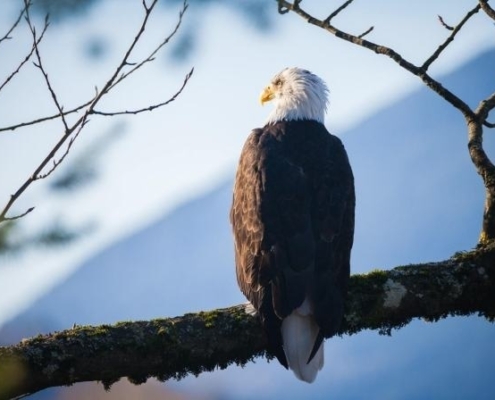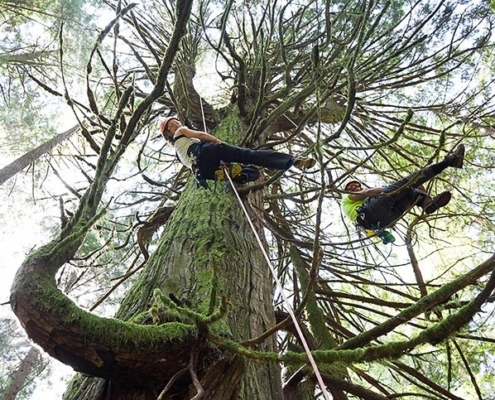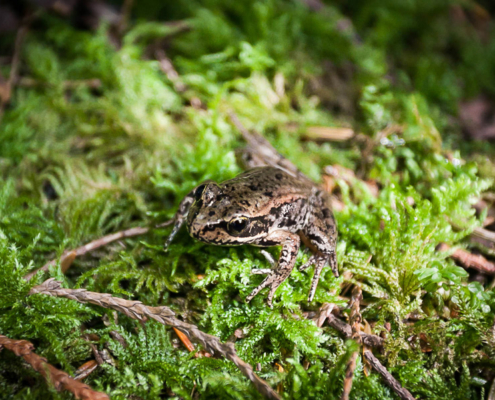
BC Government Must Protect Old-Growth Forests in Port Alberni’s Drinking Watershed
Conservationists call on BC Government to help purchase endangered old-growth forests on Island Timberlands’ deregulated lands, including McLaughlin Ridge in Port Alberni’s drinking watershed, following BC Teachers Federation motion, Port Alberni city council resolution, and now Island Timberlands’ potential interest in selling McLaughlin Ridge.

Clear-cutting threatens Echo Lake eagle colony (includes VIDEO and PHOTO GALLERY)
Every fall, hundreds of eagles descend upon the Fraser Valley to roost in the treetops surrounding Echo Lake. Experts say there is no other place like it in the world. “This is eagle central. It’s the place that if you want to protect the largest concentration of raptors on earth, this is just about it here,” says Ken Wu of Ancient Forest Alliance.... The fight continues to protect old-growth forest from logging. While the B.C. Government announcing 55 hectares were protected as old growth management areas, there are still 40 hectares that fall under a woodlot license.

Echo Lake home to diverse and endangered species
“These biodiversity surveys show that protecting all of Echo Lake’s surrounding old-growth and mature forests is important not only for saving the largest night-roosting site for bald eagles on Earth, but also for a large diversity of other species, including many species at risk,” stated Ken Wu, Ancient Forest Alliance executive director. “And these new findings are just the tip of the iceberg from just a single weekend of surveys – future surveys will undoubtedly turn up much more. It further re-enforces the fact that it should be a no-brainer for the BC government to protect all of Echo Lake’s surrounding forests.”

Race is on to save Fraser Valley’s bald eagles, Echo Lake old-growth forest
"Up to 700 bald eagles roost in a small grove of old-growth trees around Echo Lake in the Fraser Valley each fall. Does this sound like the kind of place that should be logged?...When salmon return to spawn, the eagles spend their days feasting on fish on the river banks, then, just as darkness descends, fly up to roost in the towering Douglas firs and cedars surrounding Echo Lake...Mr. Ben-Oliel, with support from the Ancient Forest Alliance, started a campaign in 2012 to save the Echo Lake forest. In 2013, the government protected 55 hectares – just over half the old-growth around the lake. But Mr. Ben-Oliel is horrified the plan still allows about 40 hectares of old growth and mature forest to be logged on the north and west sides of the lake."

Diverse and Endangered Species found at Echo Lake Ancient Forest near Vancouver
Mission, BC - A biodiversity survey (ie "Bio-Blitz") of an extremely rare but endangered, lowland old-growth forest between Mission and Agassiz (about a 2 hour drive east of Vancouver), the Echo Lake Ancient Forest, famous for its bald eagles, has revealed that it is also home to a large diversity of flora and fauna. This includes many species at risk such as various species of bats, frogs, snails, dragonflies, and moss. The surveys, conducted over a weekend last year by biologists and naturalists, and coordinated by the Ancient Forest Alliance, have now been compiled and will be submitted to the BC Ministry of Environment’s Conservation Data Centre and Wildlife Species Inventory. Over 2 days, approximately 174 plant, 55 vertebrate, 153 invertebrate, and 38 fungi species were found around Echo Lake.
